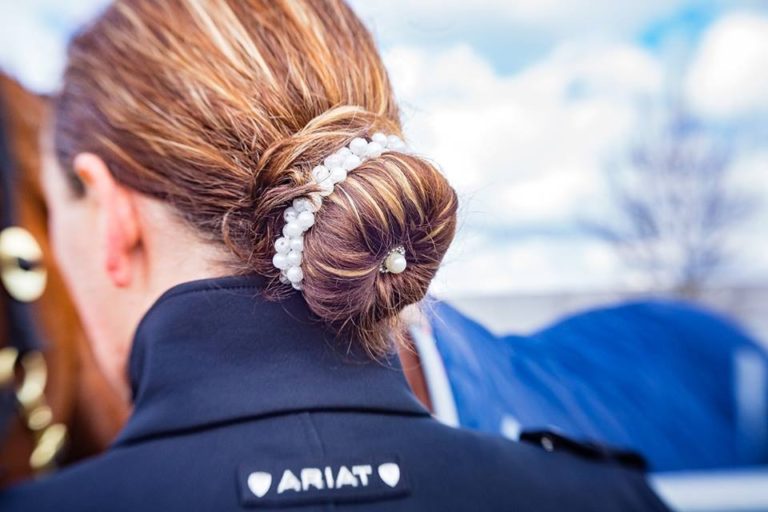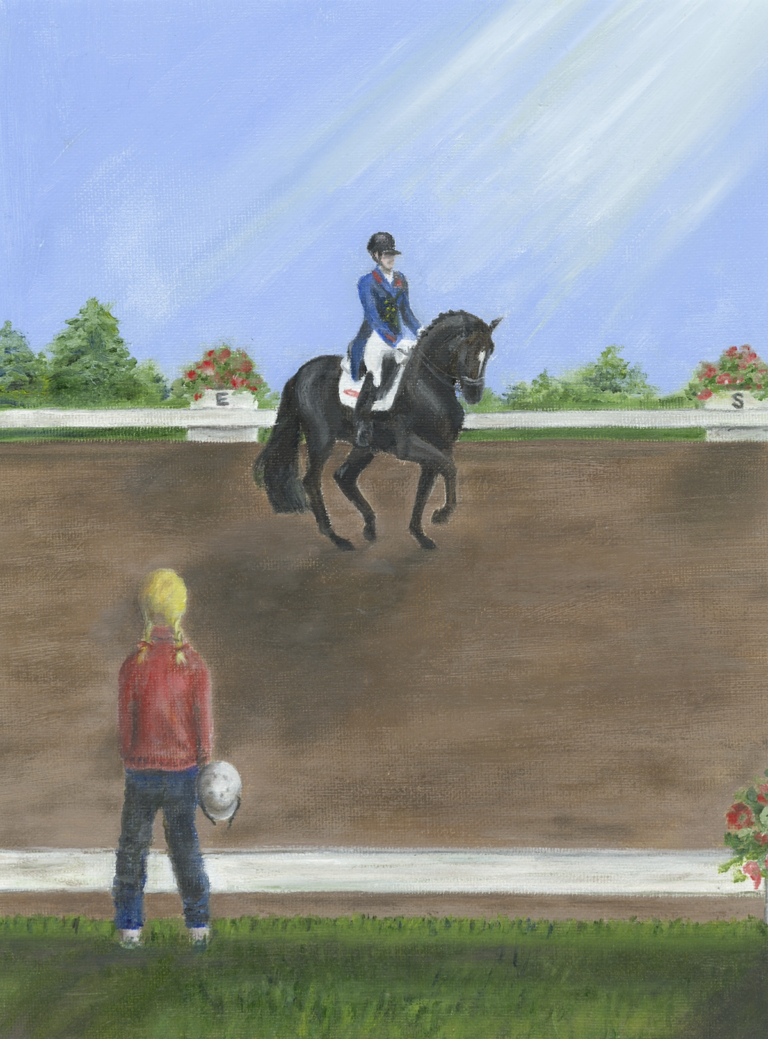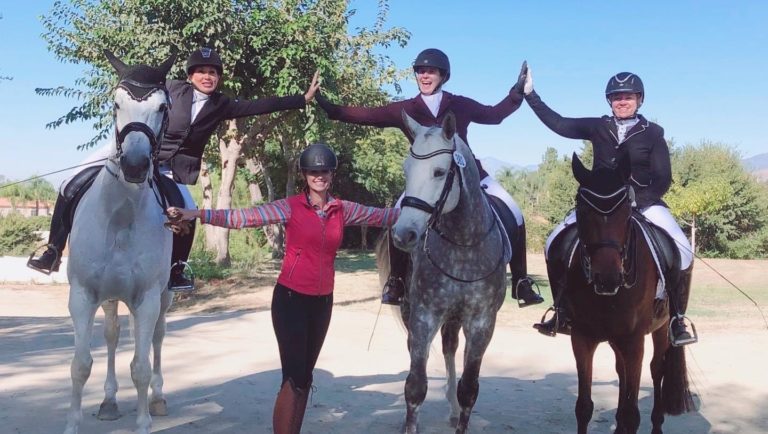Engaging the Core
By Rebecca Ashton
We hear a lot about rider fitness these days, but do we really need to do any extra work aside from riding our horse? To control your horse, first you must be able to control yourself. Your body must be well organized and effective not only to give clear, precise aids, but also to provide an easier load for your horse to carry. This is achieved by good posture and coordination which influence balance, stability and the suppleness of the body.
There is no one in the world who has perfect alignment. This can be an extra challenge if you have sustained certain injuries. We need to be aware of our misalignments and be able to overcome them. This can be very hard to do, both physically and mentally while on a moving animal. This is why it can be helpful to work off the horse to realign the body and improve body awareness before we hop into the saddle.
As mentioned, dressage requires good postural strength. You want to create a framework (your skeleton) for your horse to mold himself around. He will take the path of least resistance, and if we can hold our position and not be pushed around by the horse, it will be easier for him to soften and do what we want. It will also be less comfortable for him to fight against us. For example, we need to hold ourselves central in the saddle as we turn or ride a circle so he can’t push us off to the outside, making our inside leg less effective as a post for the horse to bend around.
We need to be strong enough to hold our framework together, but not stiff and tight. This is the job of our deep postural (local, stabilizing) muscles, which are also endurance muscles, as opposed to our large top-layer (global, mobilizing) muscles. This allows us to have more influence on our horse from a quieter place, improve muscle endurance, use the least amount of muscle necessary and not clamp on with our hands or legs for balance and security.
When we look at rider position, I like to start with the core. This word gets bandied around quite a bit, but do people really know what it means? The core muscles are a box of muscles that support the pelvis. They include the tranversus abdominis, pelvic floor, internal obliques, diaphragm and multifidis. It’s fine just to think of the pelvic floor and transversus muscles. These muscles help to hold the pelvis still, which is the foundation for our spine and also our legs. It is the base from which we can maintain a neutral spine, with its correct, natural curvature, essential for stability and shock absorption. Below are exercises to help you find your core and test whether you can keep it engaged as you move.
1. Find Your Core:
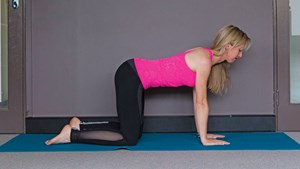
• Lie on your back with your knees bent and feet flat on the floor. (This exercise can also be done on your hands and knees, as shown in the photo on p. 24.) Have your feet and knees apart at hip width and maintain a neutral spine with ribs relaxed into the ground and shoulders gently drawn down your back. Look up to the ceiling with a relaxed, long neck.
• Stick your two index fingers into the lower abdominals and try to pull the transverse away from your fingers without engaging your upper abs. You should feel a hardening of the muscle under your fingers. It is quite an isolated movement. Think of it as though you are gently tightening a hipster belt. Imagine you have a low, wide belt with 10 holes wrapped low around your hips. You want to try to tighten the belt to about the third hole, engaging 30 percent of the core muscles, so you create a comfortable support system for the pelvis rather than feel like you’re being strangled. You can also imagine the lifting up of a pelvic elevator which would activate the pelvic floor. If there were 10 levels, you want to imagine lifting the elevator up to the third floor. If the core still feels elusive, kneel on all fours and lift your tummy up to your spine without any movement in your back.
2. Leg Slides:
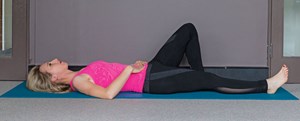
Lie on your back with your knees bent and feet flat on the floor. On an out breath, slide one leg straight out. Breathe in and return the leg to the start position. Feel that the whole time you are moving your leg, your core remains engaged.
Repeat with the other leg.
3. Advanced Work: Using An OverBall
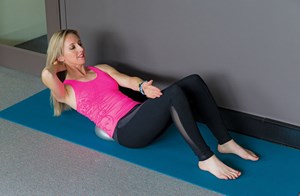
If this work is already familiar to you and you would like a bigger challenge, grab an OverBall, which is a small rubber ball that inflates to different sizes and degrees of hardness. Pop the ball under your lower back and lean backward with one hand under your head to support your neck and one hand across your body. Now, try to squash the ball by exhaling and pressing your abs down toward the ball. Your upper body will come up a bit, but this is not the actual goal. Breathe in, relax your abs a little and then breathe out to squash the ball again. If you’re not burning after three exhales, you’re not doing it right! Remember, it’s a very small movement, so do not let it go into your back. If you need extra support, you can lean on your elbows.
Rebecca Ashton is a qualified Pilates instructor, a British Horse Society-trained instructor and an Equestrian Australia-accredited dressage coach. She has competed through Intermediaire II, working with riders such as Anky van Grunsven and earning championship titles in the small tour. She lives in Australia and teaches clinics internationally (equestelite.com).




